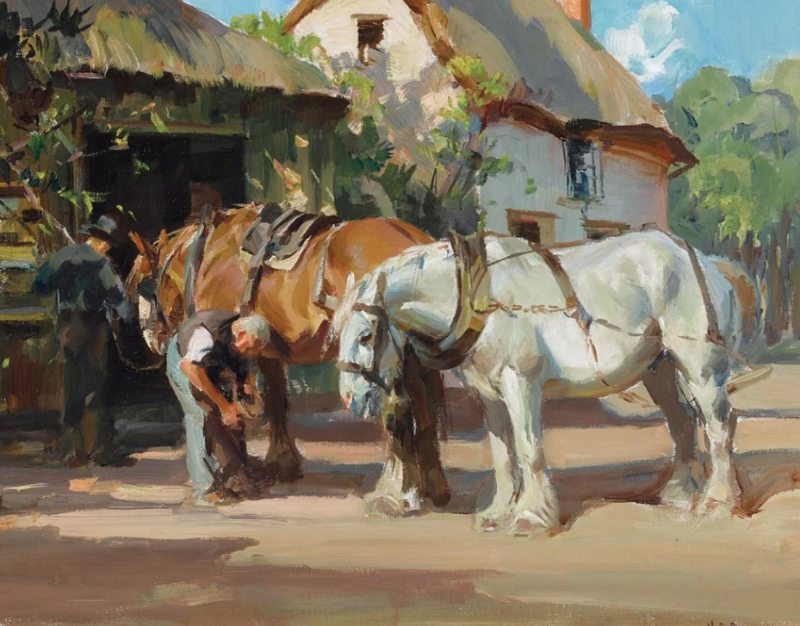Imperfection Can Be Perfect
from Colley Whisson
Colley likes to talk to his students about aiming for perfection or pushing ourselves a fraction too hard with our paintings. Normally, what happens is ,we tend to tighten up. We have to remember that we want to have the viewer do their part, too. With that, a lot of times, imperfection can be perfection.
“Painting has a lot to do with feeling free and not being overly inhabited by the thought of perfection or it being “your best.”
As you can see below in Harold Power’s painting, he does not put everything in. He just suggests certain areas rather than over-emphasizing every detail. Colley has realized over the years that he pushes and pushes to get the best out of himself. Then he wondered “Why don’t I just aim for around 98%?” If we can get close to that, we should be happy with a day’s painting. This way of thinking tends to take a lot of pressure off and lets us have fun. The painting below is quite complex, but it has beautiful edges and shapes where Power’s wanted his viewers to look. This is exactly what we should be aiming for!
Painting has a lot to do with feeling free and not being overly inhabited by the thought of perfection or it being “your best.” We always have a tendency when painting for competitions or commissions to try to push ourselves. But, Colley finds that if he goes in and makes it feel more like play and exercise, his painting turns out better than he thinks. It is often more about getting enough information to let the viewer see and understand the visual story that we are aiming to tell.
Try to set yourself in an environment in your mind and in your environment where you are thinking about how you can get the best out of yourself without having the thought of it being “your best” hanging over your head. Painting has so much to do with our physical and mental environment. Perfection can always be a concern, and that’s why Colley focuses more on his painting rhythm and if he is working too fast or too slowly. Sometimes, if you catch yourself painting too slowly, it may mean you are straining too hard toward that perfection. Once you get into your rhythm, it won’t matter what the subject is, you are just more likely to have a painting you are pleased with.
Want to learn more like this from Colley? Join him through his various learning options below!


